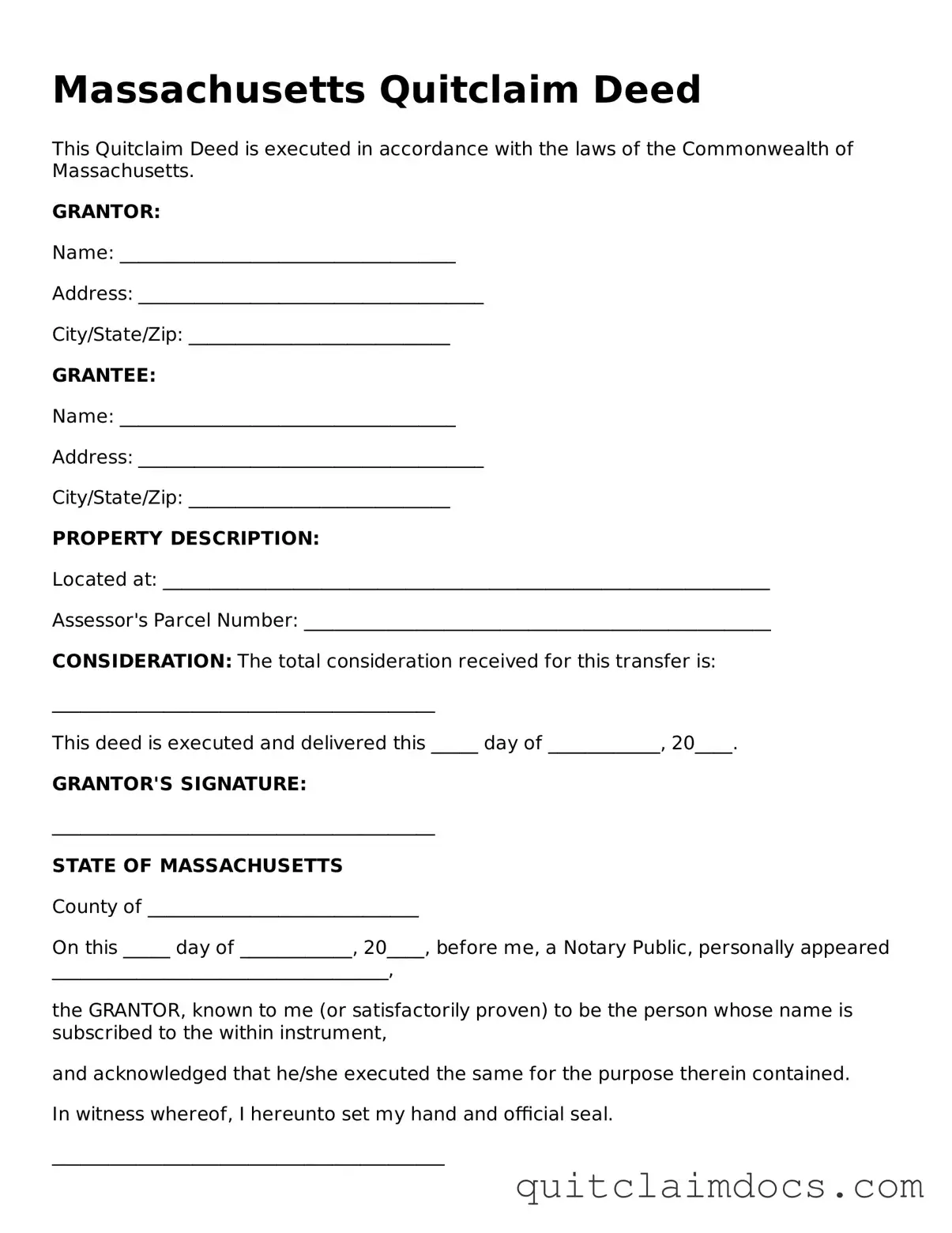Massachusetts Quitclaim Deed
This Quitclaim Deed is executed in accordance with the laws of the Commonwealth of Massachusetts.
GRANTOR:
Name: ____________________________________
Address: _____________________________________
City/State/Zip: ____________________________
GRANTEE:
Name: ____________________________________
Address: _____________________________________
City/State/Zip: ____________________________
PROPERTY DESCRIPTION:
Located at: _________________________________________________________________
Assessor's Parcel Number: __________________________________________________
CONSIDERATION: The total consideration received for this transfer is:
_________________________________________
This deed is executed and delivered this _____ day of ____________, 20____.
GRANTOR'S SIGNATURE:
_________________________________________
STATE OF MASSACHUSETTS
County of _____________________________
On this _____ day of ____________, 20____, before me, a Notary Public, personally appeared ____________________________________,
the GRANTOR, known to me (or satisfactorily proven) to be the person whose name is subscribed to the within instrument,
and acknowledged that he/she executed the same for the purpose therein contained.
In witness whereof, I hereunto set my hand and official seal.
__________________________________________
Notary Public
My Commission Expires: ______________________
